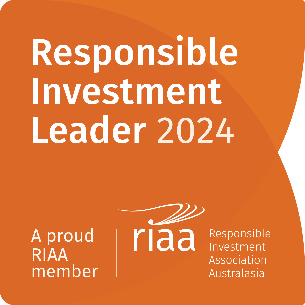What does the future hold for our capital markets?

The New Zealand financial markets regulator (FMA) and the New Zealand Stock Exchange (NZX) have announced that they will be undertaking a review of our capital markets, called Capital Markets 2029. The review is ambitious and is designed to deliver a 10-year growth agenda and vision for the sector.
The term capital markets refers to the debt and equity markets that businesses and other entities use to raise either equity or debt capital. Capital markets play a critical role in the successful functioning of any economy. It is via this platform that companies are able to raise the funds that they require to grow and individuals are given the opportunity to invest their savings and generate a return. Many studies have highlighted the linkages between strong capital markets and long term GDP growth and prosperity. It is because of the importance of this infrastructure that governments and regulators are continually reviewing how their domestic markets function and the opportunities that exist for improvement. We are about to embark on the next iteration of this in New Zealand and its timing couldn’t be better.
One of the concerns that we occasionally hear from our clients is about the future viability of the NZX if there is a continuation of transactions such as the takeover of Trade Me by Apax Partners and the decision by Xero to shift its primary listing to Australia. These concerns are not without foundation and is why this new review is so important.
When investors consider the New Zealand stock market, the characteristics which are often highlighted relate to its lack of size, its intermittent liquidity and the poor representation of those sectors which define this country. Our principal index is the NZX50 which comprises the 50 largest stocks on our exchange by free-float market capitalisation. As of today the value of these stocks is close to $95bn, which compares favourably to the value back in early 2010 of $38bn. This growth has been impressive with the NZX50 Index generating a return for investors during that time of more than 170%, whilst Australia’s ASX200 Index and the US S&P500 Index are up 77% and 125% respectively. On this basis success can be claimed, but a look under the bonnet of the NZX quickly reveals that a number of challenges exist.
The ideal outcome for a country’s stock exchange is that it is a functional platform which encourages businesses to list their equity to facilitate growth strategies and optimise their capital structures. If this framework is met then we typically see a strong pipeline of new businesses, across a range of sectors, looking to access the public markets with the size and make-up of the market being broadly representative of the overall economy. Unfortunately in both these objectives the NZX is falling short.
In March 2010 the value of the NZX50 Index as a percentage of New Zealand’s economy, as represented by its GDP, was 20%. Today it is closer to 34%. This growth appears positive but when it is compared to many of our major trading partners we lag significantly behind. In Australia the ASX200 Index relative to GDP is 99%, in the US the S&P500 Index is 124% and in the UK the FTSE100 Index is 103%. Our relative lack of representation highlights that many New Zealand businesses do not consider the public markets an optimal avenue to operate through. This perspective is further evidenced by the recent deterioration in new listing activity. Outside of the lift in Initial Public Offerings (IPO’s) during the government’s privatisation process in 2012/2013, the number of deals presented to investors over the past couple of years has been alarmingly low. In fact, outside of the $200m IPO of Oceania Healthcare in May 2017 there have been no new companies brought to market. The other big issue is that across the companies which are currently listed here, there is a poor level of sector relevance to New Zealand. In an economy where Agriculture and Finance are large contributors to activity, the investment options into these critical domestic industries are limited.
Encouragingly we have a regulator in the Financial Markets Authority (FMA) and a stock exchange who have decided to take a proactive approach to understanding what road blocks exist. Their objectives will be to determine if the regulatory settings are appropriate and to determine through engagement with corporate New Zealand and different investor groups what improvements can be made. In an environment where the success of the New Zealand Superannuation Fund and Kiwisaver is having a major impact on our domestic savings regime, the need for progress from this review is high. This requirement is also being supported by the fact that the knowledge and understanding of our capital markets have recently lifted materially for all New Zealanders (as a consequence of Kiwisaver).
At times in recent history there have been suggestions that a merger between the New Zealand Stock Exchange and an offshore exchange such as the Australian Stock Exchange or Singapore Exchange would make sense. Despite the mechanics of such a transaction being achievable, there is a lot to be said in favour of the proposition that capital markets need sovereignty. The view that the regulations and the savings source should be governed by the home country have merit. This topic along with many others will undoubtedly reappear in discussions concerning our markets and the solutions that the Capital Markets 2029 review is seeking to identify will be challenging. Amongst the options that will surely be considered should include the privatisation of other government and local government assets (based off the considerable success of the partial privatisations of businesses such as Air New Zealand, Meridian Energy and Mercury) and the listing of the New Zealand operations of at least one of the large Australasian banks (the likelihood of this has increased subsequent to the proposal by the RBNZ to lift the required capital of NZ banks). Another issue that we often hear in support of businesses selling to Private Equity as opposed to the public markets is that the compliance burden associated with a listing on the NZX is obstructive for both the company and its directors. Great care is needed in addressing this issue as the compliance framework was developed to protect investors but it appears that a higher degree of balance may be required.
This review will need to consider a range of views from a range of different interest groups but regardless of this complexity we should all be encouraged by what the FMA and the NZX are ultimately looking to achieve. Devon intends to be actively engaged in this process on behalf of our clients.





